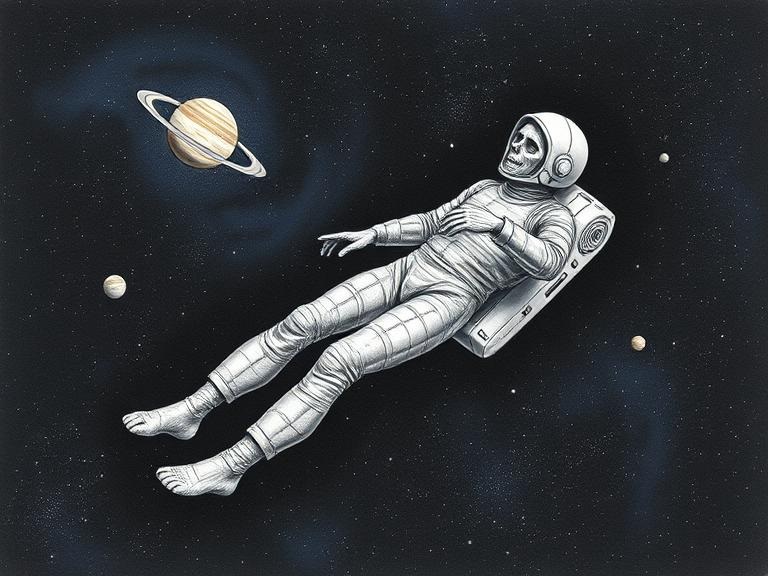Imagine you’re an astronaut, or perhaps a space tourist, who one day finds themselves outside the protection of their spacesuit. In a matter of seconds, death would come due to cerebral hypoxia. But what happens to the body once life ceases and the harsh space environment takes over? The process of decomposition on Earth and in space are entirely different. Let’s explore why.
Immediate Death: How Life Ends in Space
Without a spacesuit, a human body would be exposed to lethal conditions within moments. Death would occur within about 15 seconds due to a lack of oxygen and rapid cerebral hypoxia. But death is not the end. The body’s fluids, now deprived of atmospheric pressure, begin to boil, expanding the tissues and setting off a chain of extreme phenomena.
The Absence of Classic Decomposition: What Happens in Space?
On Earth, decomposition is driven by bacteria, insects, and environmental conditions that promote decay. However, in space, the lack of oxygen and microorganisms means that traditional decomposition does not occur. Without bacteria or insects to act, the body does not rot like it does on Earth.
Instead, the body undergoes extreme preservation. In the absence of oxygen and with temperatures that can reach -270°C in deep space, the body can freeze or desiccate, becoming stiff and leathery. In a way, a body in space becomes a "cosmic sculpture" frozen in time.
The Final Fate: What Happens if the Body Remains in Orbit?
If a body remains in low Earth orbit, the most likely fate is its disintegration during re-entry into the atmosphere. The friction with the air would heat the body, leading to its destruction. However, if the body drifts into deep space, unprotected by the atmosphere, it would remain frozen and abandoned, forever.
Burial on the Moon: Cosmic Mummification
If the body were buried on the Moon, the conditions would be even more extreme. The absence of an atmosphere and the presence of temperatures ranging from -170°C to +120°C would cause freezing or dehydration damage to the body. The dry, airless environment would favor a mummification process, similar to what happens in the deserts of Earth, preserving the body in an almost intact state.
However, the Moon presents unique challenges. Lunar dust, or regolith, carried by solar winds, would gradually erode the exposed tissues. Additionally, cosmic radiation would alter the cellular structures, causing further damage to the body, though its form would remain recognizable for centuries, if not millennia.
Comparison with Earth
| Factor |
|
Space/Moon |
|---|---|---|
| Decomposition | Bacteria, insects, moisture | Autolysis (internal enzymes) |
| Preservation | Skeleton in 10-12 years | Mummification or freezing |
| External Agents | Insects, water, temperature | Radiation, vacuum, regolith |
In summary, bodies in space do not undergo decomposition in the same way they do on Earth. If buried on the Moon, they would become mummified or frozen, retaining a recognizable form for centuries. In deep space, they would become frozen "cosmic sculptures," suspended in eternal limbo. Death in space, then, is anything but ordinary.








Leave a Comment